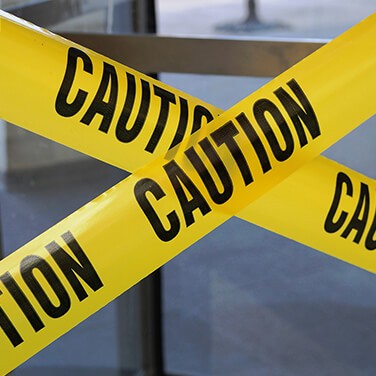The Evolution Of Laboratory Safety: A Cautionary Tale
By Nancy H. Pitts
Safety has been difficult to achieve throughout the history of modern science, even when it has been defined as a primary goal.
Many scientists have been driven by a desire for discovery that has at times outstripped their concern for lab safety. This was especially true in years past, when incurring injuries was simply accepted as one of the personal costs of making a difference in chemistry.
From Checkered Past to Challenging Present Day
Consider the case of Robert Bunsen (1811 to 1899), developer of the eponymous Bunsen Burner. The price he paid for the many sophisticated discoveries credited to him included serious injuries that resulted from numerous incidents, chief among them a laboratory explosion that blinded him in one eye.
An even more dramatic example was the sacrifice made by Marie Curie (1867 to 1934), who received the Nobel Prize for discovering radium and coined the term “radioactivity.” Her contributions to humanity and healthcare were immense, but she was careless in her work with the element long after learning of its health hazards. Both Curie and her chemist daughter died of blood diseases resulting from exposure to radioactivity. And her laboratory notebooks — which remain radioactive to this day, and will remain so for another 1,600 years — are still stored in a lead-lined box in France.
Even today, risks abound. Of the 126 million known chemicals, for instance, 80,000 are commonly used, yet only 300 have been adequately tested for safety. Factor in the vagaries of human behavior, including bad habits and practices and knowledge limitations, along with a lack of incentives and just plain bad luck, and the challenge of managing safety in the chemical laboratory becomes increasingly clear.
Modern Safety Measures on the Rise
After the U.S. Occupational Safety and Health Administration (OSHA) mandated the Chemical Hygiene Plan (CHP) in 1990, industrial laboratories across the United States instituted more rigorous safety programs, and commercial enterprises appointed dedicated safety officers to help monitor lab safety practices. Hazard Communication Standard guidelines, issued in part in response to the HIV/AIDS epidemic, were then followed by the Bloodborne Pathogen (BBP) Standard in 1992.
While European countries instituted and now follow similar guidelines to those of the United States, these precautions are often absent from labs in developing countries — where practices like “mouth pipetting,” which exposes technicians to corrosive, toxic, or biological substances, still persist.
These developments notwithstanding, major incidents have occurred within the last decade. A U.S. student was severely injured in a laboratory accident in 2010, and two U.S. university students lost their lives in separate lab incidents in 2008 and 2011, respectively.
In the 2008 case, the City of Los Angeles filed criminal charges against the University of California Board of Regents and against the individual chemist in charge of the lab. Shortly thereafter, employers in academia and the chemical industry reportedly increased their efforts to safeguard students and workers.
Lapses in biosecurity allowed the virus that causes foot-and-mouth disease to escape from a lab in the United Kingdom in 2017.
And in 2014, vials containing a virulent form of live smallpox virus were discovered abandoned in a storage room at the U.S. National Institutes of Health.
The Rapid Pace of Recent Progress
In a 2011 report, the U.S. Chemical Safety and Hazard Investigation Board (CSB) stated that it was “greatly concerned about the frequency of academic laboratory incidents in the U.S.” The report asked why, after large numbers of hazard evaluation guidelines had been produced for and followed by industrial laboratories, similar guidelines had not been developed for academic laboratories. The reasons, the board concluded, came down to differences in focus and types of research, organizational hierarchies, and financial incentives.
The CSB has not been alone in its concern. Three major corporate safety leaders observed in a 2013 letter that researchers are 11 times more likely to get hurt in an academic lab than in an industrial lab. After the National Academies initiated a study of lab safety in nonindustrial institutions in May of that same year, subsequent reports were produced by both the American Chemistry Society (ACS-9/2013) and the prestigious National Research Council of the National Academies (NRC-7/2014).
The latter report, issued just four years ago, revealed positive as well as chilling findings:
Safety is emerging as a priority and a core value of many academic institutions and of individual laboratories. A strong, positive safety culture is more beneficial than a compliance-only culture.
Universities often do not provide sufficient incentives to promote a strong, positive safety culture. In some cases they may create barriers or disincentives.
Citing its expectation that federal funding agencies would start to hold universities accountable for “their ability to ensure that research can be conducted on campus in a safe and reliable manner,” the Association of Public & Land Grant Universities (APLU) formed a task force in 2015 to determine how to implement recommendations from the ACS and NRC reports.
The APLU Task Force issued its guidelines in 2016 and, to align with them, U.S. academic institutions are currently instituting and prioritizing safer practices in laboratories. As that process unfolds many new technologies are being designed to support these advances, promising even more progress to come in laboratory safety.
